- Home
- keyboard_arrow_right Phelan Dental Seminars
- keyboard_arrow_right OPENING THE VERTICAL DIMENSION

How would you test out a change in the occlusal vertical dimension?
This week I would like to tell you about a technique that I use to test altering the vertical dimension without preparing any teeth. Changing the vertical dimension is an important tool that we use with large cases to create the room needed for restorative material but there is some concern about stability and the ability of the patient to adapt to the alteration.
Today I wanted to share with you a nice and simple technique to alter and test the new vertical dimension on unprepared posterior teeth.
I will talk more about the 5 areas of concern we have when altering the vertical dimension as well as the techniques that I use to determine the vertical in my new seminar this April, Functional Occlusion and Full Mouth Rehabilitation. I have also created a detailed review of vertical dimension for the restorative dentist in my new occlusion DVD series.
The technique that I want to share with you today depends on having an accurate diagnostic wax-up created on study models that were mounted on an articulator.
Once you have a duplicate model of the wax-up you can create a vacuum formed shell and use it as the matrix to create the provisional restorations. In my practice we use a Biostar positive pressure thermal forming device to create really accurate shells using 0.8 mm Hardcast material.
I can then take this shell to the mouth and seat it on the unprepared teeth to verify the fit and accuracy. With my technique, I will load the matrix with Protemp Plus provisional material and let it set on the unprepared teeth that have been coated with Vaseline. I will remove the matrix and Protemp Plus provisional and place it on a model of the teeth. In this case, I created a pretreatment model using Permadyne impression material that was a little more flexible then stone to facilitate any corrections or additions I would make to the overlay provisional. Another material that works well for this technique is Mach 2 Die Silicone.
After I have tried in and confirmed the fit of these restorations, I will cement them into place with RelyX Unicem Self-Adhesive resin cement. When I am testing out the new vertical dimension, I prefer to have the overlay provisional locked onto the teeth so that the patient does not have any issues with them.
To complete the change I will address the anterior teeth. In this case, the patient had a very steep angle of guidance so I decided to develop the Incisal edge position of the anterior teeth with composite resin. I used an Incisal putty matrix from the diagnostic wax-up and built the teeth up individually using plumber’s tape as isolation.
With the completion of the lower arch using this technique, the case can now be segmented and treated as a series of smaller cases at the new vertical dimension.
For example, you could now complete one posterior quadrant using really conservative porcelain onlay preparations. You could also complete the anterior porcelain veneers, or you could complete the entire case. This technique provides you with many different options as a restorative dentist.
You can see some of the case photos from my keynote presentation attached to this post. I hope this post helps you to think outside the box about creative ways to address some of the problems we face in restorative dentistry. To see more details about this case and many other complex dental cases, don’t forget to attend my new seminar in April.
If you have any questions or comments, please feel free to leave them using the link above
Post comments (7)
© Copyright Phelan Dental Seminars I Dr. Stephen Phelan


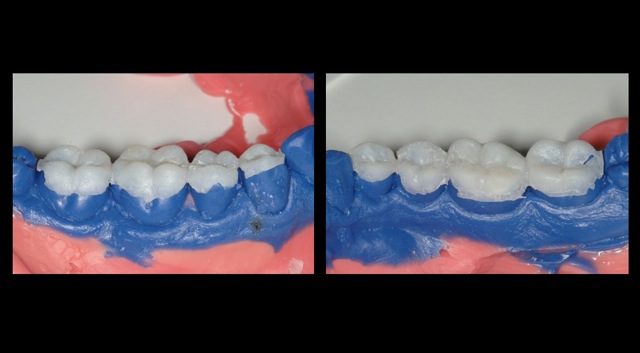
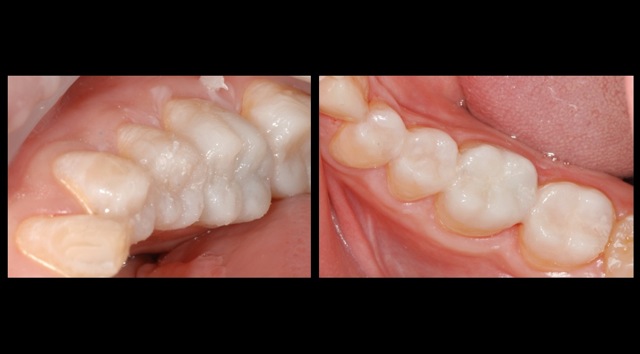
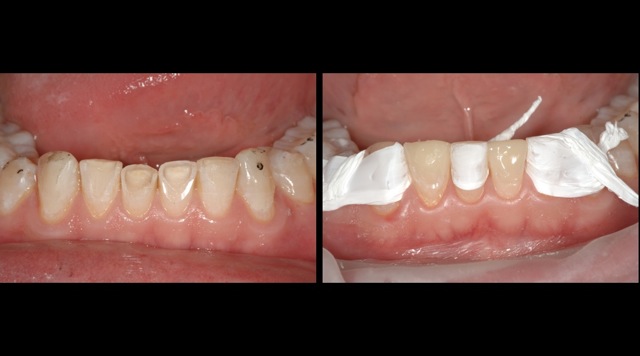
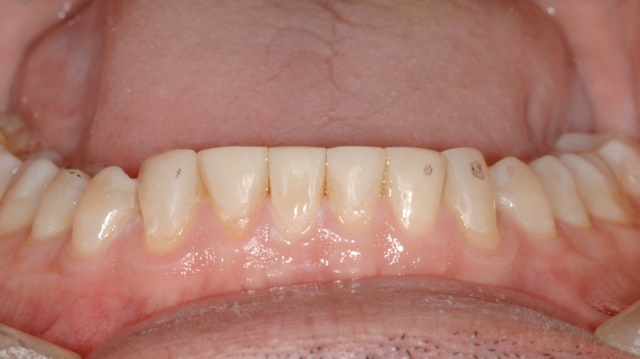
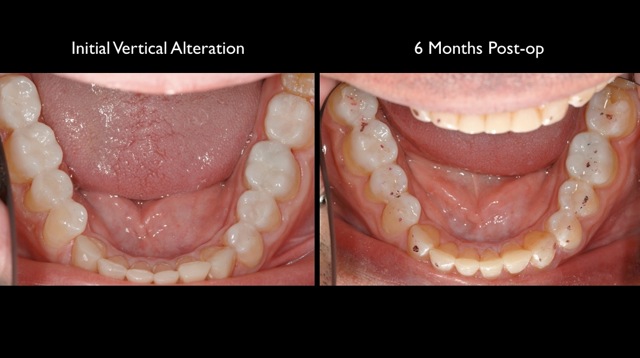
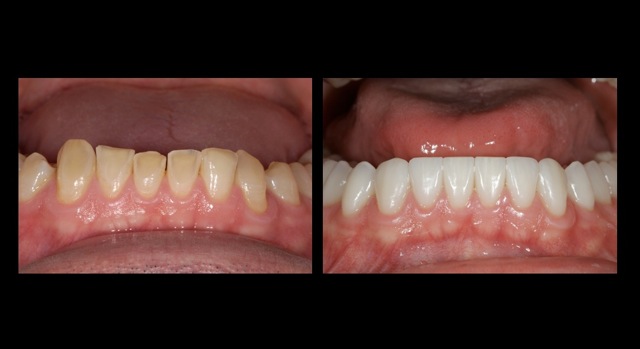
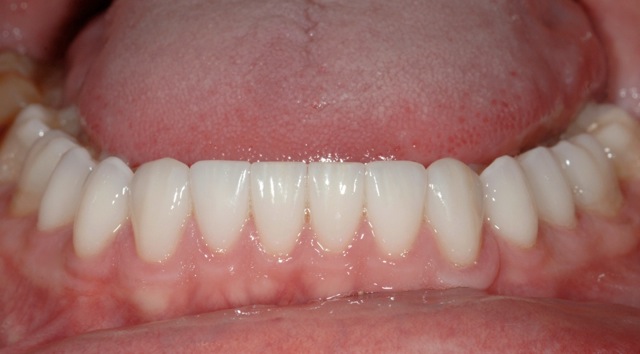


Samir on April 14, 2011
Hi doctor Phelan! Why don’t you separate this composite overlays during bonding on teeth for good flossing?
Tom Weir on February 17, 2011
Would sure like to see how you found his new vertical, AP etc. and how long do you leave these patients in this bite to see if they are comfortable? These patients occlusions are the way they are for a reason. What is done with them once the treatment is finished, night guard for ever? This is nice work but how do you know it is stable?
Dr Stephen Phelan on February 17, 2011
Hi Tom,
Thanks for the comments. I have a detailed system that I follow when I open the vertical dimension and alter the guidance and envelope of function for large cases but it is too involved for a blog post which is why I am hosting a 2 day seminar in April. I will cover all of these topics in detail but it takes 2 days to develop and present the material.
As far as stability is concerned the case from this post is 6 years old without any issues and I have cases that are 12 to 13 years old doing really well with these kind of changes following the system that I use. I do try and have the patients wear a night guard but not all will. If they have no muscle symptoms and the TMJ can accept load you can make them an Invisalign type of retainer to protect their restorations and hold their teeth in the completed position. I hope this helps.
Thanks,
Stephen
Dr Teeth on February 18, 2011
How about patient with TMD symptoms, how do you find the correct vertical and AP position ?
Any muscles test ? Cone bean x-ray ?
Dr. C Fialka-Eshenko on February 17, 2011
How do you determine the correct vertical dimension for the patient?
Doug Jones on February 17, 2011
Is the permadyne impression model the blue model with the protemp on it?
When you are building the lower incisors using an incisal matrix – doesn’t the plumber’s tape get in the way of seating your matrix?
I’m looking forward to April 1,2 – I have attended all but 1 of your programs – thank you for sharing your knowledge and for your transparency.
DJ
Dr Stephen Phelan on February 17, 2011
Hi Doug,
Thanks for the comments!
Yes the Permadyne impression material is the blue and pink model.
The plumber’s tape is so thin that it does not interfere with the seating of the matrix even though you would think that it would it is perfect for these case!
See you in April!
Cheers, Stephen